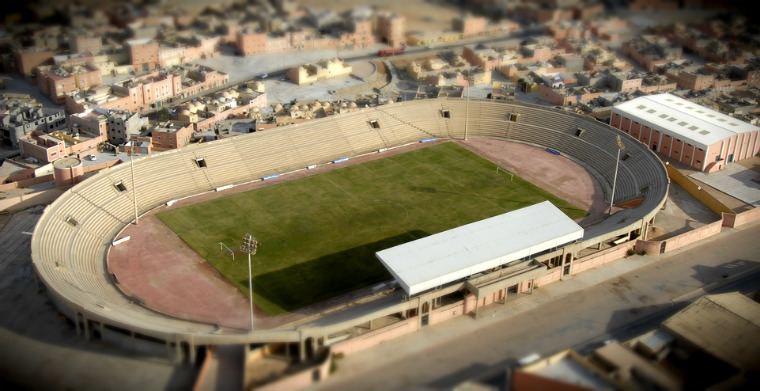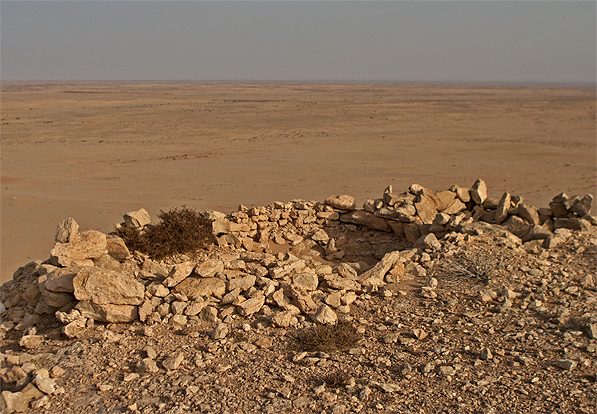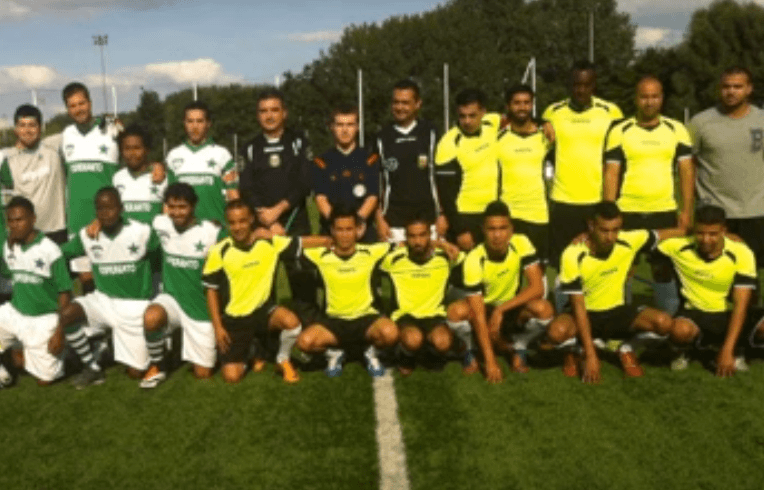Western Sahara Football – A Sahrawi Sporting Identity

Sahrawi Arab Democratic Republic, Southern Provinces, Sahara Occidental or simply Western Sahara. Even defining what name to give to this region presents just the first of the many hurdles to overcome before one can begin to understand the complicated state of Western Saharan football.
Expressing Sahrawi Football Identity ♦ Current Tensions ♦ Moving Forward
Football in Western Sahara
On the face of it, football in Western Sahara can seem to be quite a straight forward affair. Jeunesse Massira play in Laayoune (ES:El Aaiún; FR: Laâyoune), the largest city in Western Sahara. They play in the Moroccan football system, spending most of their time in the top flight even reaching four cup semi-finals, most recently in 2005. It’s importance to Moroccan football is seen by the cities hosting of the 2016 Moroccan Cup final in the city’s “Stade Sheikh Mohamed Laghdaf” stadium.
This can been seen in the origins of the Jeunesse Massira team itself. It was originally founded in 1977 in the central Moroccan city of Benslimane, centered between Rabat and Casablanca near Morocco’s coastline. The team was originally named “Auxilliary Forces of Benslimane” reflecting the connection to the Royal Armed Moroccan Forces who established the team, much like the connections seen in Eastern European teams of the time and RAF Rabat, whom provided the inspiration for establishing a similar team in Benslimane. Football has been strong in Spanish Morocco with Atlético Tetuán appearing in the Spanish 1951/52 La Liga campaign, recording a 4-1 home win against namesakes Athletico Madrid and a 3-3 draw with Real Madrid.
This could be used to reflect the growing Moroccon control in the region as reflected in the change in the teams name to “Jeunesse Massira” with Massira being the name given to the “Green March” where up to 300,000 unarmed Moroccans marched across the border to occupy areas of Western Sahara vacated by the Spanish. The teams somewhat artificial existence is shown by an absence of local crowds at games, with support made up from mostly from the friends and family of security forces in the region. The moving of a Moroccan team into Western Sahara could be seen as a metaphor from the movement of Moroccan people across the border in 1975.
Expressing Sahrawi Football Identity
However, while Moroccan influence was expanding into Western Sahara, and into Western Saharan football, the Sahrawi Arab Democratic Republic (SADR) were seeking to take their own foothold into the footballing world. Many teams have represented the Sahrawi people throughout the years, with the first games being recognized by the Sahrawi Football Federation as having taken place in 1984 against Algerian league sides. The difficulties with political instability along with an almost total lack of resources made organizing fixtures a challenge for the Sahrawi Football Federation.
Western Sahara lineup vs. Esperanto
The prospects of development for Sahrawi football were given a boost when in 2003, Western Sahara was accepted as a member to the NF-Board, an organisation set up to help organised football for regions unaffiliated to FIFA. Though unable to attend any of the early tournaments organised by the NF Board due primarily a lack of funding, in 2012 they received financial help from the Kurdish organizers of the 2012 Viva World Cup allowing the team to travel to Erbil.
From this a transition occurred from the previous “Western Sahara XI” sides, a selection which had lost to a Galicia selection 2-1 in 2011, into a fully fledged Sahrawi National Football Team (nicknamed The “Dromederies”) to compete as Western Sahara into the future. The then Sahrawi Minister of Youth and Sport, Mohamed Moulud Mohaed Fadel officially announced the establishment on the 25th of March 2012. Following official backing and logistical support from Kurdistan, Western Sahara could finally compete on the international stage at a time when other sporting en-devours were being made in the region such as the introduction of the “Sahara Marathon”.
The Viva World Cup would prove to be a relative success for the debuting Western Sahara team. A decision was made to send players from the Tindouf camps rather than those based in Europe, and following trials a team of 20 was given five days to train before making the journey to Kurdistan. Though losing their group games to hosts Kurdistan (6-0) and Occitania (6-2), a main cause being explained that players were slipping due to not being used to playing on grass. The placement round games would see improvement with wins against Darfur (5-1 : Their first in competitive football) and also against Raetia (3-0) before losing a more competitive rematch against Occitania to finish in 6th place overall in their maiden tournament. However, with disorganization within the NF Board halting any further tournaments being organised to date, Western Sahara made the switch to CONIFA to be it’s home for the foreseeable future.
There is precedent for football outside of FIFA to be one approach used by nations who have gone on to successfully receive international recognition which has boosted their case for self determination. A similar approach was seen in North Africa by Algeria, who used a touring ‘national’ side to represent Algeria (Then part of France). This was to help to legitimize the Algerian statehood movement known as the Front de Libération Nationale (FLN) team representing the Algerian resistance movement, also known informally as the “eleven for independence” in English.
On the eve of the 1958 World Cup, Algerian native players left Switzerland for Tunisia to join up with the FLN side including Mustapha Zitouni and Rashid Makhloufi, a league winner in 1957 with St.Etienne and with four French caps to his name. This team continued to tour until Algerian independence before it was succeeded by an official Algerian National team. In more recent times, teams such as Palestine and most notably Kosovo have expressed their national self determination through receiving international recognition through their football team, if not through total political recognition.
Current Tensions
Prior to this VIVA World Cup tournament, tragedy was to occur in the Moroccan controlled Western part of the region in the port city of Dakhla. SCC Mohammédia from Mohammédia, a port city just north of Casablanca, visited to face Mouloudia Dakhla recording a 3-0 victory. However reported tension and stone throwing as fans left the ground escalated as supporters left the stadium into riotous conditions. It was reported that “criminals” took advantage of the disorder to engage in attacks with knives, escalating to the point of five reported deaths, three civilians run over and two police officers with some 30 others wounded.
Similar tensions erupted south east of Laayoune earlier that year stemming from the originally peaceful Gdeim Izik protest camp which aimed to seek better treatment for Sahrawi people, though some also took the opportunity to call for Sahrawi independence. The African Union condemned the violence, saying “Forcible measures taken by Moroccan authorities to dismantle the camp and disband the protesters have regrettably resulted in the loss of lives and the destruction of property”, violence which spread throughout the region.
Morocco has also shown specific opposition to Western Sahara on a footballing front. Prior to the 2012 VIVA World Cup, Morocco attempted to contact Qatar Airways to have the team’s scheduled flights from Doha to Erbil suspended, though the Western Saharan team still arrived on schedule in Kurdistan. Morocco have also hosted two celebration exhibition matches in Laayoune in commemoration of the Green March for the 40th anniversary in 2015 and once again for the 41st in 2016, featuring on both occasions Argentine legend Diego Maradona. Others to feature in these games include former players of the year Rivaldo and George Weah in front of crowds of 30,000 people. This, tied to the city’s hosting of the Moroccan Cup final can be seen as how Morocco can also use football to boost recognition for their claims to this area.
Such actions are not limited to high profile football events. In 2016 at the u-20 L’Alcúdia hosted it’s annual International Football Tournament (also known as COTIF) near Valencia, a tournament which has showcased the likes of Raúl, Isco and Abel Hernandez in past editions, though it was here where tensions again showed. At the opening ceremony the introduction of the Moroccan team was greeted by whistles from the 10/11 year olds from a Western Sahara team competing in a concurrent children’s tournament. From this, the Moroccan team initially refused to attend the official reception from the mayor of L’Alcúdia, though this was later changed to a full withdrawal from the u-20 tournament, suggesting that they would not play if the Children’s team from Western Sahara was allowed to compete. COTIF president Eliseu Gomez stated that “nothing was done with bad will, the claim that they can not be together in an official place, it is the first time in 33 years that a team withdraws during the competition”. It shows the tensions of this conflict are far reaching.
Despite relinquishing ‘de facto’ control in the area in the 1970’s, Spain continues to play an active role in supporting the people of Western Sahara. Many Sahrawi moved to Spain in search of a new life, now being dispersed through the country. This has created a separate Sahrawi community based in Europe which helps to support those away from Western Sahara. However due to difficulties in communicating with and travelling between those based in the refugee camps in Algeria, this has created two separate Sahrawi organisations, though unity is the ultimate goal. At present the footballing unity is found but the winner of the RASD cup in Spain playing against the champion from the camps, in a champion of champions final.
Moving Forward
With the official establishment of a Western Saharan team in 2012 after a long legacy of football in the region, the challenges into the future remain in the logistics of organising players and fixtures for this team to grow and thrive as representation for Western Sahara, it’s people and it’s footballing community. With occasional friendlies for the national team, and the RASD cup providing an outlet for those away from their homeland, football remains a passion for Western Saharan people. The political conflicts in the region may take time to solve, and though there can be sometimes crossover into sport, the hope is that in this case football can rise above all and bring people together in a peaceful way, simply for the love of the game.
Credit to those at RASDSport for help in the research of this article and to @ditikisahara for very helpful contributions also.
Note:All efforts have been made to ensure accuracy in this article, though with potential errors, particularly in translation errors. However if an error is notice, please contact and any error will be happily corrected.





